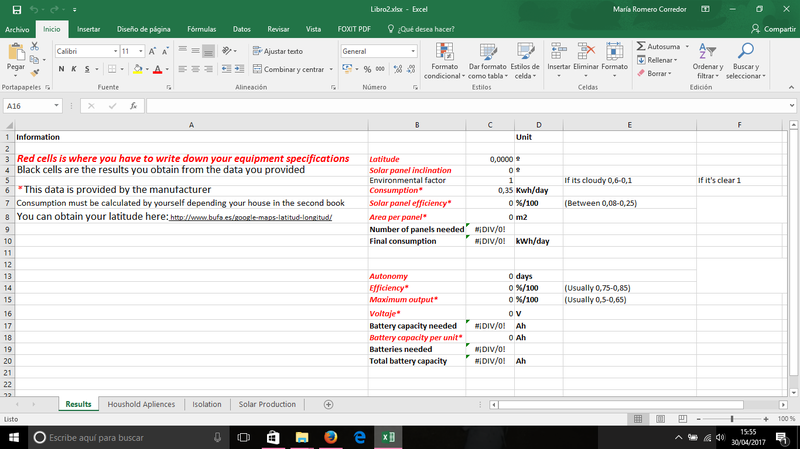Absolutely Scientifics | You are my Sunshine
The Challenge | You are my Sunshine
Solartastic
Our idea is to help people understand how solar energy works and how much energy is produced per panel. Also we've developed a tool to help people plan their solar panel and battery need.

Sohi, we are absolutely scientific and we are going to explain to you on whichconsisted our challenge, that is callled "You're my sunshine" and theway we tried to work it out.
So this challenge consisited in finding some app or tool thatallowed us to accomplish three main aims:
1) Explaining to new users how solar panels work, thedifferent types existing and the limitant factors found, so they could reallyunderstand its upsides and disadvantages.
2) Making people aware of daily consumption by giving theexample of the NASA project taking place in hawaii,called HI-Sea that wants torecreate the life in Mars.
3) Developing some tool that allows people to know how muchenergy is produced by their installation.
The very first problem we had to tackle was the fact that wedon't know how to create any kind of software or app. Thus, we decided todevelope some kind of blog in which we gathered all the different tools thattarget each aim. In the end, we were able to develope an html page whichincluded all our progress, and is considered as our solution to the challlenge.
So basically our page contains a lot of stuff. The firstthing found is an introduction presentation for new possible costumers thatincludes a proper definition of solar panels, some information about thedifferent types existing, and the way they work. In addition there are somelimitant factors mentioned that users need to bear in mind. By searchinginformation for this tool, we understood deeply the answers to all thequestions that we had about solar panels. This way, we could make ourselvesclear when explaining and when trying to work out the rest of aims.
Secondly, there is also this little program that we've createdand it's really useful for non expert costumers. It consists on an excell pagewith several functions, and one of them (that is based on a formula found byHalley in the XVIII century) allows them to calculate the number of panels andbatteries needed in a system only with the data that the manufacturer provided.
In order to calculate this, another data needed is thelatitude.Thus the program calculates the isolation in the area and the solarproduction depending on the solar panel model, with other words, the energyproduced, measured in Kw*h/m^2.That's in the first book of the excel page, andone of its function.
In the second book, there is another function, that achievesthe third aim. There is a table with many household apliances, where the powerof each household apliance and the hours of use per day must be written, so theprogram will give the total consumption.
Automatically it will write in the first book yourconsumption. Also we've added a environmental factor that goes from 0.1 to 1. /0.1 means a really cloudy day, and 1 means that the sky is totally clear.
This factor is neccesary to calculate which householdapliancies must be turn down in order to have a superavit in solar production ,which allows users to make sure that they have energy enough prouduced even ifthere are some unexpected waste. All this will apear in first and second book.
The other books found are the formulas that allow tocalculate everything, so the first and second books are a simplification of allthe process so everybody can use it. In the third book we can find theisolation calculations,in which latitude, the date and the inclination of thesolar panel have an influence.
In order to make easier to understand the influence that thishas on the radiation received, our teacher helped us to develope a web in whichby choosing a place in a worldmap and a date and an inclination angle, theradiation received could be shown by a point that growed in size. This is avery visual method that allows us to make people understand how important arethis factors to calculate and have a near idea of their daily production.
Besides, we filled the different excel tables by putting theexample of the NASA experiment from Hawaii, that wants to recreate an habitatin Mars, so this also can be useful for the people working there so that theycan both calculate their energy demand and production. By putting this examplewe had a practical point of view of all the theorical calculations that we weredeveloping.
Resources:
-Personal knowledge
-Wikipedia.org
-Physics books
-Imagination and creativity
SpaceApps is a NASA incubator innovation program.